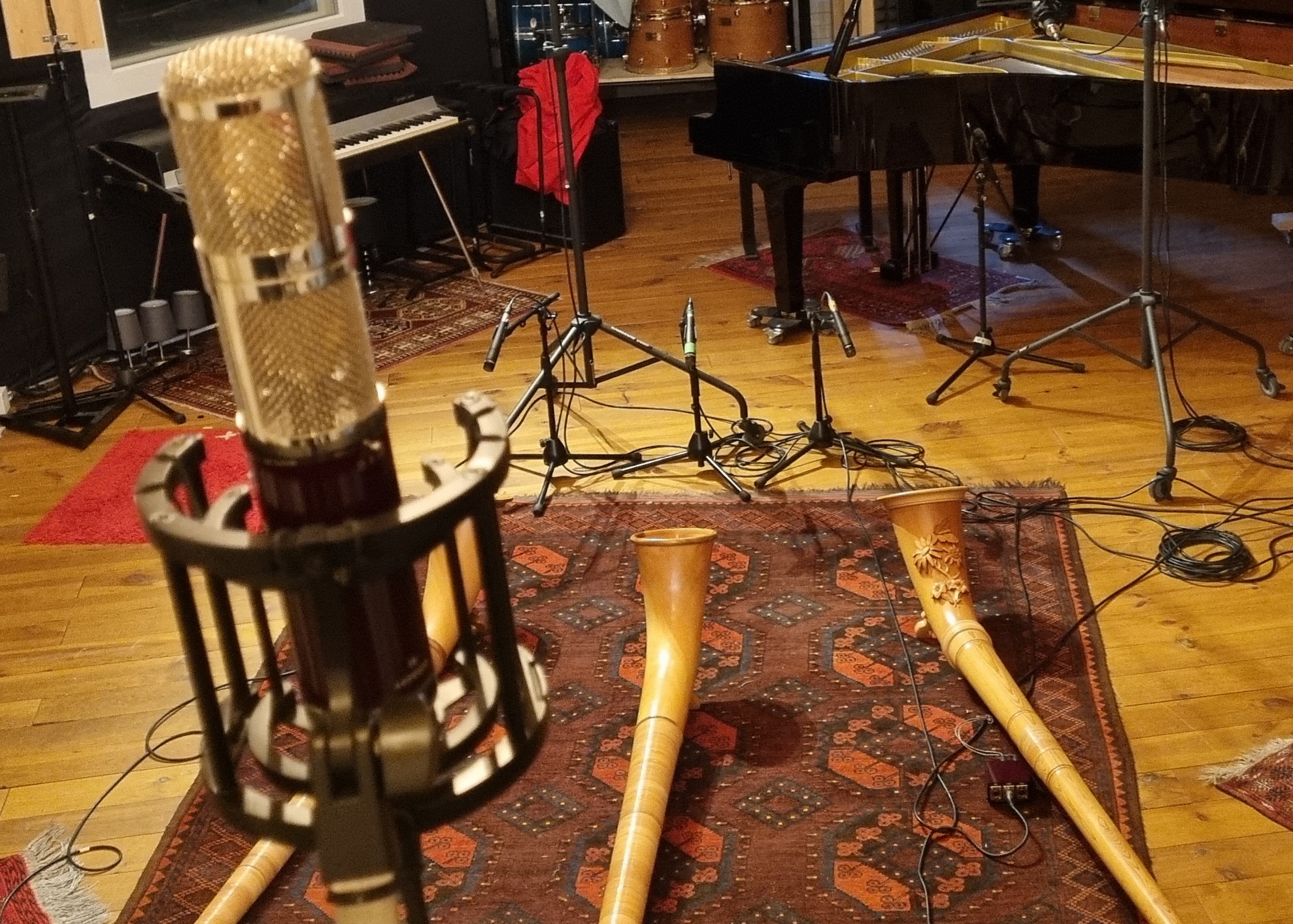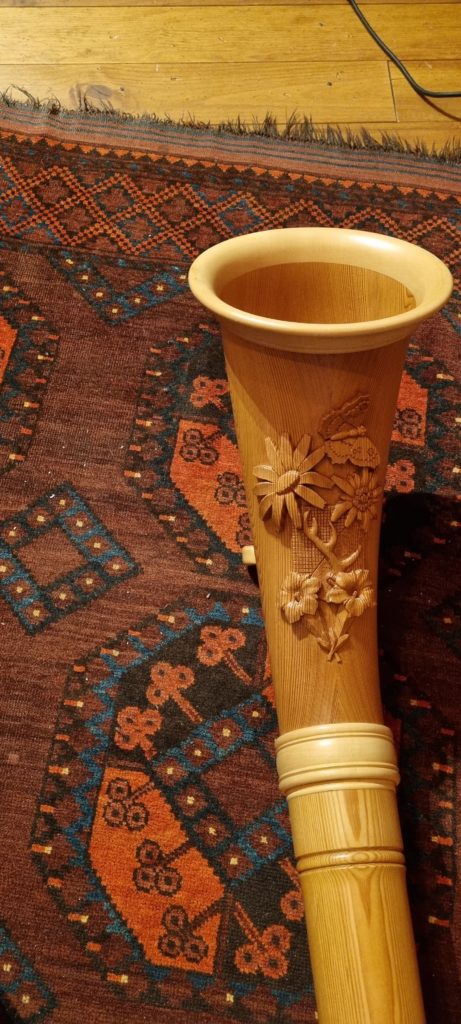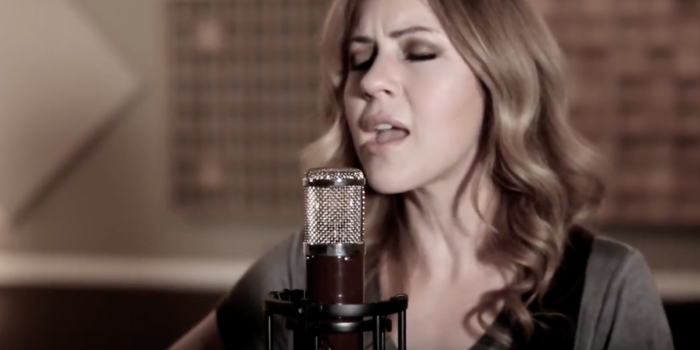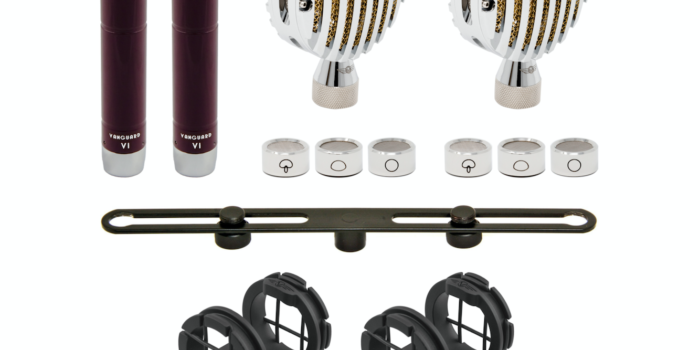When most of us hear the word “Alpenhorn” we think of one thing: those Ricola commercials from the 90s. But we’re here to tell you that the Alpenhorn is much more than clever cough drop marketing. The Alpenhorn is a traditional Swiss instrument with a storied history that dates back over 500 years. It sort of like a trumpet, but it’s wooden, has no valves, and at 8 feet long is MUCH harder to transport to the gig. Leopold Mozart (the father of Amadeus) even wrote a piece for Alpenhorn and string orchestra.
So we were excited to talk to Antoine Estoppeey of Blend Studio in Switzerland about his recent session tracking Alpenhorns for a promotional video for the 2022 Beijing Olympics. He told us all about his studio, the history of this unusual instrument, and the challenges of recording it. Here’s our conversation, edited for length (oh, and stick around til the end to hear the final recording).
Please tell us about yourself and your background, as well as your studio.
I live in Switzerland next to Lausanne, in the French part of Switzerland. After I finished high school, I wanted to be a classical pianist. When I began studying, I realized that spending 5, 6, or 8 hours per day practicing alone was not how I wanted to spend my life, and it wasn’t my idea of music. I also wasn’t some sort of prodigy or anything, so it was really unlikely that I would be playing concerts as a classical pianist.
I did know that I wanted to work in music, so I figured out that there was a lot of space on the technical side of things. I went to SAE Institute in Geneva to learn about recording. I really liked the program, because two-thirds of the work you do is practical, and only one-third is theoretical study. I studied there for a year, and then got a few internships in recording studios here in the French side of Switzerland. I met a client at one of those internships who was a producer in London. He liked the way I produced vocals, so he offered me work in London on some sessions there. After a little while, I came back to Switzerland and started recording more with the contacts I had met during all this.
In 2009, my mother inherited my grandfather’s house, and it had a really big room that was more of a storage space at the time. It’s basically a barn. I asked her if we could perhaps work in this space. She agreed, on the condition that I also live in the apartment below the space. To me, this sounded perfect. The house has an amazing view of the lake here.
We started working on the control room, and then began working on the live room. By 2012, we had the entire studio completed, including two isolation booths.
I have a lot of connections in the jazz world here, so we have a lot of clients that like to record the whole band live in one take. Because there’s not a lot of studios here, I’ve gotten a lot of clients by having a nice-sounding large recording space to do live recordings.
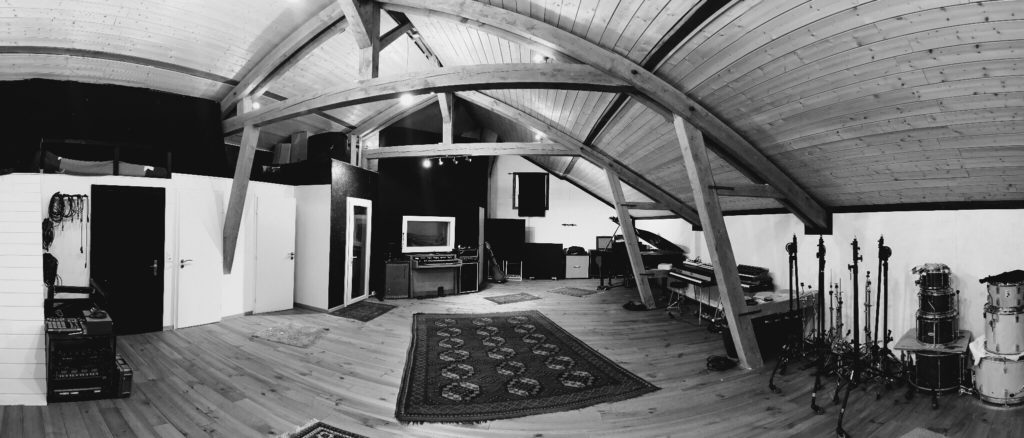
Blend Studio in Lausanne, Switzerland
Tell us about how this session came about.
The International Olympic Committee is based in Lausanne. Since the Winter Olympics will be in Beijing in 2022, a Chinese musician who lives in Switzerland decided to, together with his daughter who wrote the music and played the piano, produce a promotional video for the Beijing 2022 Winter Olympics, shot in Switzerland. They specifically asked for a few popular Chinese melodies to be in the song, so that was arranged to be played on the alpenhorn as well. It all happened very fast. I was contacted about 5 days before the session.
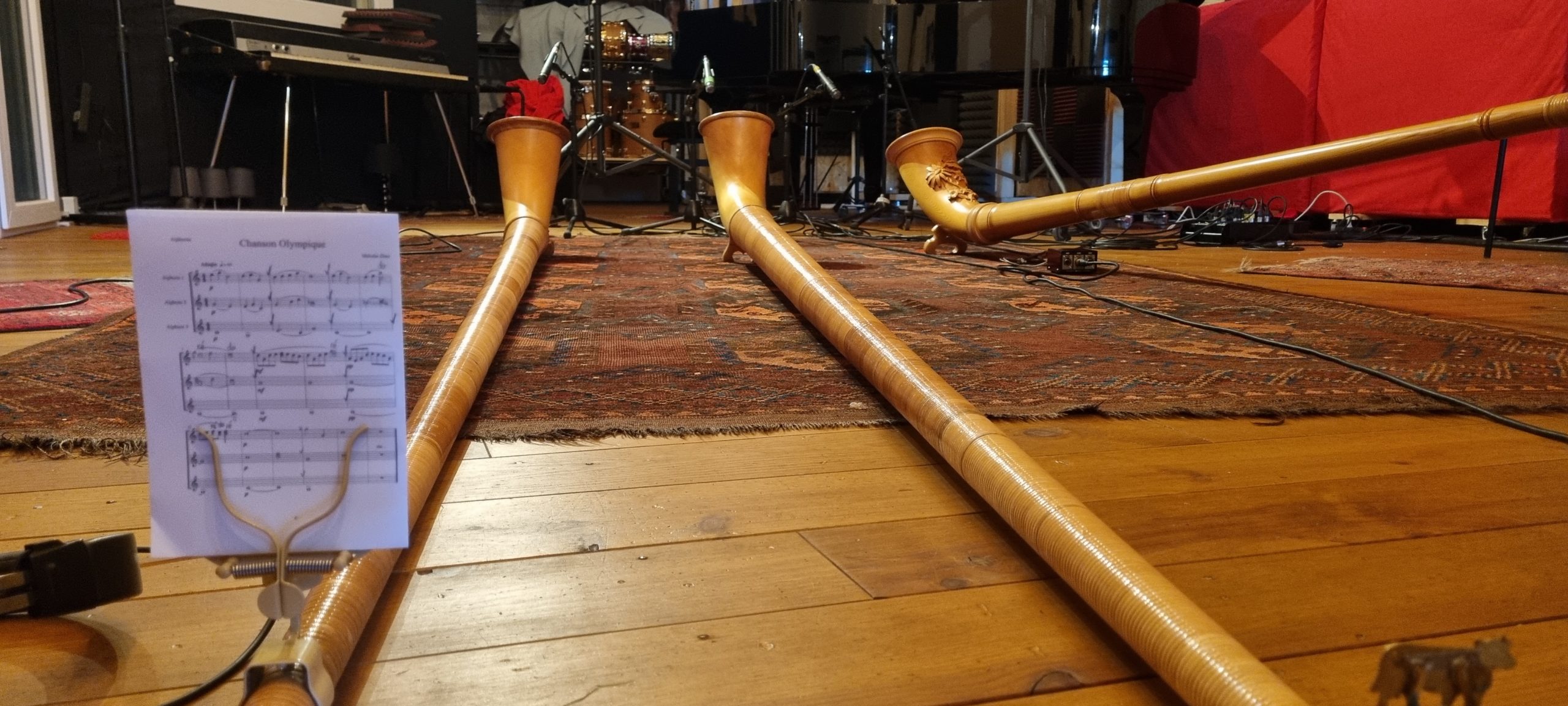
Pop quiz: are these Alpenhorns or just Pinocchio’s legs?
For us Americans who are only familiar with the alpenhorn from Ricola commercials, can you explain its history, construction, and use in Switzerland?
The first time the alpenhorn is mentioned in written history is sometime around 1500. It was used in the Alps to communicate between different villages, or for one village to communicate with everyone around them. They also used it the way that bells were used in other parts of Europe – to call people to church.
It’s a fairly loud instrument, but not as loud as something like a trumpet. It’s handmade of wood and each instrument costs between $3000-4000. They’re very large, and they’re constructed in multiple pieces. Each one is something like 2.5 meters (8 feet) long.
The alpenhorn doesn’t have any valves, so all the notes are played by blowing overtones. So the music composed for alpenhorn is usually very slow, and they change the notes with their lips and by utilizing different mouthpieces. Because of this, an alpenhorn can only play in one key.
“I’m just a man, standing in front of the Swiss Alps, asking people to listen to this Alpenhorn melody by Johannes Brahms”
What are some of the challenges in recording alpenhorn?
The first challenge was obvious – it’s not very common to record this instrument, which means it’s not very common for alpenhorn players to come into the recording studio. So this was the first time for these particular players. The other challenge was figuring out how to get a good sound while recording the instrument, because there’s really not a lot of practical examples in music for the sound you want from this kind of instrument.
What’s the usual recording technique for an alpenhorn? What kind of processing is done?
So at first I set up a microphone by applying the way we listen to the instrument – no one listens to it with their head inside the horn. I wanted to hear the space, and to hear the full picture of the instruments. So I set up the V44S in XY mode about 5 meters [16 feet] away, directly in front of the players. The V44S captured the sound really well and picked up the airy details of the instruments.
After a few takes, we felt we had something pretty usable. The leader of the band also suggested a different technique. People who hear the alpenhorn are usually very far away, even during concerts. In fact, during concerts, the alpenhorn players often face the back wall, and the crowd is behind them; this way you get mostly reflections, and it sounds more like what you would hear traditionally in the mountains. During outdoor concerts, people are often 40-50 meters away from the players.
So I set the microphone above them and behind them, as far away as was reasonable. We also created an alpenhorn “sample pack”, so to speak – the arranger requested that we record every note separately so she could use them for different melodies later.
As far as processing and signal chain, I wanted a really clean signal for this, so i didn’t compress or EQ on the way in – not even a low-cut, because the alpenhorn can play some very low notes. I put the V44S into a pair of Neve 4081 preamps, and then added a huge reverb in the mix – like 6 seconds of decay – to try and capture the sound of the Alps. In the video, they’re playing in the mountains, so I wanted it to sound like the mountains.
Why did you choose the V44S for this project?
Anytime I want to record anything in stereo, it’s my go-to stereo microphone. It sounds really really good in my room, and I try to use it the way I use my ears. I’ll have the musician start playing, and I’ll walk around the room to somewhere things sound really good, and just put the V44S there in XY, and I always like it.
The V44S is probably on 95% of my sessions since I got it. I usually don’t process it very much. I really like the way it seems to effortlessly capture the natural sound of my room; I rarely have to correct anything with EQ. For drums or something, I might add some compression or distortion or something like that for effect, but mostly I just record it completely dry and it sounds really good.
The V44S captures a really natural, life-like stereo image. For this project, I felt that the V44S was going to be the best at recording the alpenhorns the way they’re meant to be heard.
What other instruments and techniques does the V44S serve in your studio?
It’s my go-to piano mic. I will usually just use the V44S on piano, and that’s it. I’ll have the pianist start playing, move the mic around a little bit to find the sweet spot, and then we’re ready to record.
I really like it on drum overheads – for jazz drums, I will put it directly above the drummers head, facing the drums. I feel that it really captures the expression & dynamics of the kit the way that particular drummer plays. I’ll often combine it with a kick and snare mic, and that’s all. If I’m recording an ensemble like a string quartet, the V44S is my main sound in XY, and then I’ll blend in the spot mics.
I usually use the V44S in XY. I also like it in Blumlein configuration for a room mic, especially for drum rooms. Sometimes I’ll use it in double-omni as a room mic as well. If I’m blending it as a room mic – as opposed to it being the main sound of the instrument as a stereo pair – I’ll usually play with the patterns a little more.
One thing I really like about the V44S, besides how good it sounds, is how easy it is to set up. When I’m working with stereo pairs of mics, it’s always a really big pain to get them aligned together. If you move one, the other one has to be moved. If one mic stand is bumped, it completely ruins the setup. You’re just never sure about how the phase will come out. With the V44S, I can just set it up, twist the top capsule, and start recording. The phase and imaging is great.
And now, the moment you’ve been waiting for: an Alpenhorn Ensemble piece for the 2022 Beijing Olympics, recorded using a Vanguard V44S Stereo FET Condenser
Thanks to Antoine Estoppey for talking to us all about this session. For more on Antoine and his studio, visit the Blend Studio website. For more on the V44S Stereo FET Condenser, click here.



